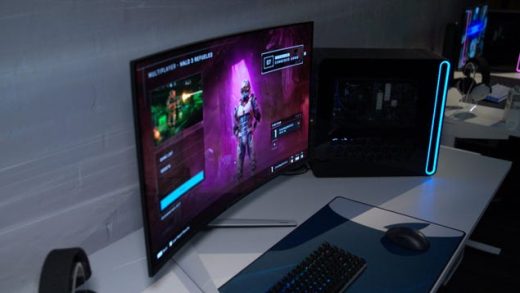In the early days on the net, fan content creation was king. If you wanted to get some trivia about Star Wars, there was no IMDB. Instead, you found some old rickety fan site with a guestbook and visitor counter. I speak for the early 2000’s nerds when I say that I had my first foray into coding with creating fan content.
Coding with virtual pets
Back in the early 2000s, my tech-illiterate parents had no idea what was going on between me and the enormous CRT monitor. While they occasionally peered in on my activity, I was usually playing a dress-up doll game or reading about end of the world conspiracy theories. (Kids should have hobbies, right?) Or, I was on Neopets.
For the uniformed, Neopets was (is!) a virtual pet site where you adopt a cute static image of a fantasy creature, sell items in an outrageous economy, play games, post on message boards, and of course, code. Although coding was not part of the main game, so to speak, in my heyday, I didn’t know a single player who didn’t play around with code. Neopets was my first exposure to HTML and CSS and it was magic.
In order to become part of the in-crowd on Neopets, not only did you have to have the most expensive items and the cutest pet, you had to have the best looking pet page, shop, and guild. These were all customizable and leaving them blank was a serious social faux pas.
The game encouraged you to learn some HTML with a user-friendly guide to turn your blank pet page into a functional website with graphics, text boxes, and whatever your heart desired. Of course, when you give some creative teens free reign, fan pages emerges. People turned their pet pages into pages about their favorite Sailor Moon characters. Guilds (clubhouses on Neopets, with members and even a hierarchy) became devoted to fan content. I remember joining an Invader Zim guild where of course, we tweaked the HTML and learned how to host images and create graphics.
For many of us coming of age in the early 2000s, this was some of our first exposure to concepts like programming and web design. I still remember the first time I made a simple line of scrolling HTML marquee text in my shop (which was the coolest in 2003). It glowed bright red, it was hideous, and it was mine.
While this may seem like small potatoes compared to modern tools like Codecademy, this exposure set many young creators up for a lifelong journey into programming. And yes, most of the early creations looked like what you’d expect from web pages in the early 2000s. But nothing was “dumbed down” for children. Neopets fully allowed us to explore real HTML and CSS. My middle school didn’t offer any computer science class. When it came to learning the basics of coding, my teacher was a green elephant with wings.
Angst-fueled programming
What next? As I grew up, a little thing called LiveJournal was where the teens poured out their angst and song lyrics. There was only one problem: How do you make your journal look good? Pre-made LJ themes were hideously uncool. Writing your own themes? Now that was cool.
LiveJournal themes were written in Style System 2 (S2) – an object-oriented programming language created in 1999 by Brad Fitzpatrick. S2 used individual layers for customization. Since this language was only used for LiveJournal, if you wanted to customize your journal, you had to get learning.
It was easy to learn and easy to create with. Memory serves me with hours and hours of browsing page layouts, tweaking things to get my journal looking just right and edgy enough to post some emo lyrics at 2 am. (Mood: apathetic)
Sign my guestbook?
Remember some of the names from the dot-com bubble? The early 2000s hosted a plethora of simple free web hosting. For newbies, you didn’t need to know extensive programming to begin. started. However, you did need to learn some to get your page looking good. Websites like Geocities encouraged you to explore, dive into the code, tweak things, break things, change things. Compare this with social media such as Facebook, which requires no knowledge of coding and no way to turn your page into what you want it to be.
Yet again, we see the same pattern emerge. People went to GeoCities and Tripod and even Homestead to create fan content about Sonic the Hedgehog or Buffy the Vampire Slayer. Then, they left with a newfound knowledge of HTML and web design under their belt. Many of these people went on to learn more about programming.
HTML wasn’t the only thing out there. In 2017, Java applets were deprecated, but when Java applets hit the scene it changed web layouts. You could embed an applet and with just a simple plug-in, pages could execute a small application. It also meant that content creators faced another language to learn: Java.
SEE ALSO: Know your history — Java’s rise to popularity
Internet 3.0
Where do we go from here? These aforementioned sites are now either ghost towns or just plain gone. Amateur content powered IT knowledge. We learned and taught one another programming for free just to create content. While fan content continues to thrive online, I can’t help but survey the landscape and see it change before my eyes.
Twitter and Instagram pages offer no customization, no custom CSS. In timely news, with Tumblr’s controversial content flagging, another page for content creation and code fiddling begins its decline. Tumblr offered a younger generation a way to play with page layouts and HTML tweaking. Yet again, the site encouraged users to create their fan space by learning how to code and use markup language. (No one will read your Harry Potter fanfic if your page looks atrocious.) Will another similar site take its place? Where are the websites like Neopets, Livejournal, GeoCities, and MySpace that allow us to get messy and fumble with code?
I’d love to hear your experiences with where you first dipped your toe into coding and if they mirror mine. Did you learn HTML on the side while feeding your virtual pets? Did your desire to talk about Naruto force you to learn web design?
The post Don’t forget your Neopet: How fan content taught a generation coding appeared first on JAXenter.
Source : JAXenter













